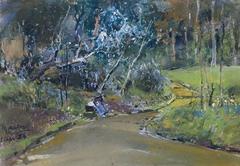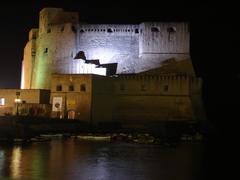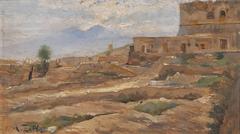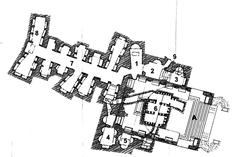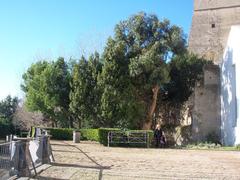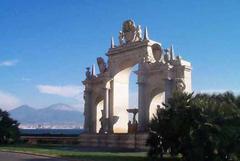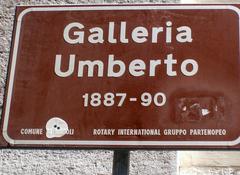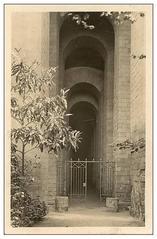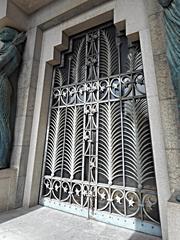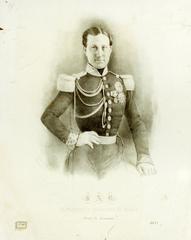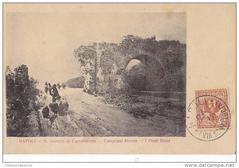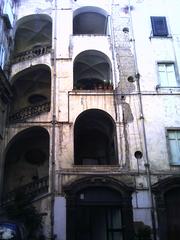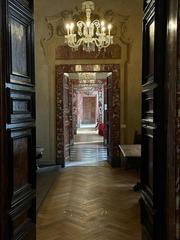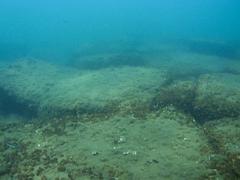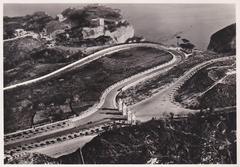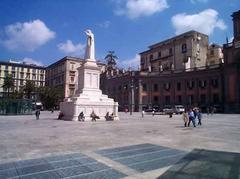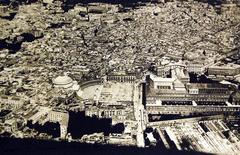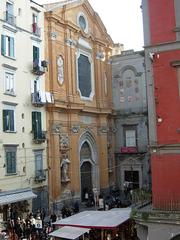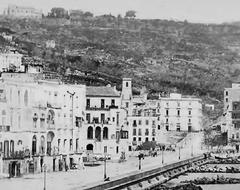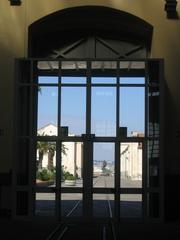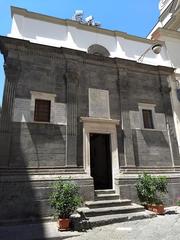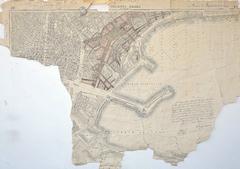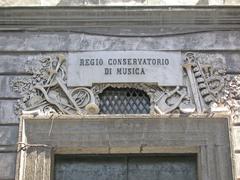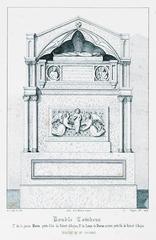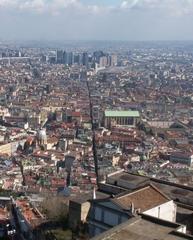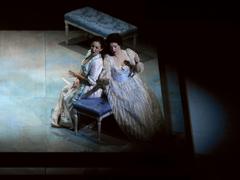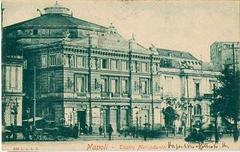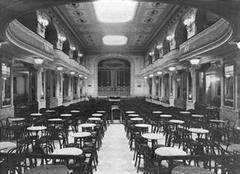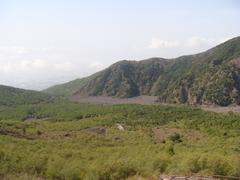Visiting Basilica di San Francesco di Paola: Hours, Tickets, and Tips
Date: 24/07/2024
Introduction
Welcome to our comprehensive guide on visiting the Basilica di San Francesco di Paola, an architectural and historical jewel nestled in the heart of Naples, Italy. Located in the bustling Piazza del Plebiscito, this basilica is not just a place of worship but a monument steeped in history and cultural significance. Originally conceived by King Joachim Murat as a tribute to Napoleon Bonaparte, the basilica underwent significant transformation under King Ferdinand I, who repurposed it into a religious monument dedicated to Saint Francis of Paola (Spotting History). Inspired by the Pantheon in Rome, its neoclassical design, grandiose dome, and intricate artistic details make it a must-visit for history buffs, architecture enthusiasts, and spiritual seekers alike. This guide aims to provide you with all the essential information for planning your visit, including its rich history, architectural marvels, visiting hours, ticket information, and much more.
Table of Contents
- Introduction
- History of Basilica di San Francesco di Paola
- Architectural Design and Influences
- Artistic Contributions
- Historical Significance
- Visitor Information
- Visitor Tips
- FAQ
- Conclusion
History of Basilica di San Francesco di Paola
Origins and Early Conception
The Basilica di San Francesco di Paola, located on the west side of Piazza del Plebiscito in Naples, Italy, has a rich history intertwined with the political and social changes of the early 19th century. The initial conception of the basilica was part of a grand plan by King Joachim Murat, Napoleon Bonaparte’s brother-in-law, who ruled Naples from 1808 to 1815. Murat envisioned the entire Piazza del Plebiscito, including the large building with colonnades, as a tribute to Emperor Napoleon. This ambitious project was intended to symbolize the power and influence of the Napoleonic regime in Naples (Spotting History).
Transition to a Religious Monument
The political landscape shifted dramatically with the fall of Napoleon and the subsequent restoration of the Bourbon monarchy. Ferdinand I, who reclaimed the throne of Naples, decided to continue the construction of the building but repurposed it into a religious monument. The transformation was completed in 1816, and the structure was dedicated to Saint Francis of Paola, a revered figure who had stayed in a monastery on the same site in the 16th century (Spotting History).
Architectural Design and Influences
Neoclassical Design
The architectural design of the Basilica di San Francesco di Paola is heavily influenced by classical Roman architecture, particularly the Pantheon in Rome. The façade of the basilica features a portico supported by six columns and two Ionic pillars, creating a grand and imposing entrance. The interior of the church is circular, a design choice that enhances the acoustics and visual symmetry of the space. The dome, which rises to a height of 53 meters, is a striking feature that dominates the skyline of the piazza (Spotting History).
Facade and Portico
The facade is dominated by a portico supported by six grand Ionic columns made of Carrara marble. The tympanum features statues of San Francesco di Paola, San Ferdinando di Castiglia, and Religion, created by notable sculptors Giuseppe Del Nero and Heinrich Konrad Schweickle.
Dome
The dome stands at 53 meters high, decorated internally with lacunars and covered externally with calcareous stone. It is a technical marvel of its time, showcasing intricate craftsmanship and engineering prowess.
Interior Layout
The round central body of the basilica has a diameter of 34 meters, paved with polychrome marble. It is surrounded by 34 marble columns with Corinthian capitals decorated with the Bourbon lily, creating a harmonious and balanced interior space.
Altarpieces and Chapels
The basilica houses significant artworks, including pieces by Nicola Carta, Pietro Benvenuti, Camillo Gerra, and Tommaso de Vivo. The main altar features a work by Anselmo Cangiano, and the apse contains a painting by Vincenzo Camuccini.
Sacristy
The sacristy houses notable artworks such as the “Immaculate Conception” by Gaspare Landi and the “Circumcision of Jesus” by Antonio Campi.
Colonnade
A grand colonnade, inspired by St. Peter’s Basilica in Rome, flanks the basilica and forms a semi-circular embrace around the Piazza del Plebiscito.
Artistic Details
The interior decorations were completed in 1836, and the statues were placed in 1839. The use of polychrome marble, intricate frescoes, and detailed sculptures all contribute to the basilica’s status as a Neoclassical masterpiece.
Artistic Contributions
The basilica is not only an architectural marvel but also a repository of significant artworks. Before the main altar, visitors can admire a 1641 work by Anselmo Cangiano, which was transferred to the basilica in 1835 from the church of the Santi Apostoli. The apse houses a painting by Vincenzo Camuccini titled “St Francis of Paola Resuscitates a Dead Man,” which adds to the spiritual and historical ambiance of the church. Additionally, the sacristy contains notable works such as an “Immaculate Conception” by Gaspare Landi and a “Circumcision of Jesus” by Antonio Campi (Spotting History).
Historical Significance
The Basilica di San Francesco di Paola stands as a testament to the turbulent history of Naples during the early 19th century. It reflects the city’s transition from Napoleonic rule to Bourbon restoration, encapsulating a period of significant political and cultural change. The dedication of the basilica to Saint Francis of Paola also underscores the enduring influence of religious figures in the history and identity of Naples.
Visitor Information
Visiting Hours
The basilica is open daily from 8:00 AM to 8:00 PM. Note that visiting hours may vary on public holidays and for special events (Nomads Travel Guide).
Tickets
Entry to the basilica is free, but donations are welcome to aid in its preservation (Nomads Travel Guide).
Guided Tours
For a more in-depth experience, consider booking a guided tour. These tours often include detailed insights into the basilica’s history, architecture, and artwork.
Travel Tips
The basilica is centrally located in Naples, making it easily accessible by public transport. Nearby attractions include the Royal Palace of Naples and the Teatro di San Carlo, perfect for a full day of exploration.
Accessibility
The basilica is wheelchair accessible. However, it is advisable to check for any temporary accessibility issues before your visit.
Photography
Photography is allowed inside the basilica, but please be respectful of worshippers and avoid using flash.
Visitor Tips
Best Time to Visit
To avoid the crowds and enjoy a more serene experience, it is advisable to visit the basilica early in the morning when it opens. This timing not only allows for a peaceful exploration but also provides an opportunity to appreciate the morning light filtering through the dome, enhancing the beauty of the interior.
Nearby Attractions
Located in Piazza del Plebiscito, the basilica is surrounded by other significant landmarks. After visiting, tourists can explore the nearby Royal Palace of Naples, just a short walk away. The square itself is a great place to relax and soak in the vibrant atmosphere of the city (The Road Reel).
Dress Code
Visitors are expected to dress modestly when entering the basilica. Shoulders and knees should be covered, and hats should be removed. This dress code is a sign of respect for the sacred nature of the site.
Local Etiquette
Visitors should be mindful of local customs and etiquette. Speaking in hushed tones, refraining from eating or drinking inside the church, and being respectful of those who are there to pray are important considerations. Additionally, it is customary to make a small donation if you light a candle inside the basilica.
Safety and Security
The basilica is located in a safe area of Naples, but it is wise to be aware of your surroundings and keep an eye on personal belongings. Pickpocketing can be an issue in crowded areas, so keeping valuables secure is recommended.
Refreshments and Facilities
There are no refreshment facilities within the basilica, but the surrounding area of Piazza del Plebiscito offers numerous cafes and restaurants. Gran Café Gambrinus, a historic café nearby, is a popular choice for both locals and tourists (The Road Reel).
Souvenirs and Shopping
While the basilica does not have a dedicated gift shop, the area around Piazza del Plebiscito is filled with shops and stalls selling various souvenirs, from religious artifacts to local crafts. Visitors can find unique mementos to remember their visit.
Special Events and Services
The basilica hosts regular religious services, including daily Mass. Visitors are welcome to attend these services but should be respectful and follow the congregation’s lead. Special events, such as concerts and religious festivals, are also held throughout the year. Checking the basilica’s schedule in advance can provide information on any special events during your visit.
Language
While Italian is the primary language spoken in Naples, many staff and guides at the basilica speak English. Learning a few basic Italian phrases can enhance the visitor experience and is always appreciated by the locals.
Transportation
The basilica is easily accessible by public transportation. The nearest metro station is Municipio, a short walk from Piazza del Plebiscito. Several bus lines also serve the area, making it convenient for visitors to reach the basilica from various parts of the city.
Additional Tips
- Plan Ahead: Given the basilica’s popularity, it is advisable to plan your visit in advance, especially during peak tourist season.
- Stay Hydrated: Naples can get quite hot, especially in the summer months. Carry a bottle of water to stay hydrated.
- Respect the Space: Remember that the basilica is a place of worship. Be respectful of those who are there to pray and avoid disruptive behavior.
FAQs
Q: What are the visiting hours for the Basilica di San Francesco di Paola? A: The basilica is open daily from 8:00 AM to 8:00 PM. Visiting hours may vary on public holidays and during special events.
Q: How much does it cost to visit the Basilica di San Francesco di Paola? A: Entry to the basilica is free, but donations are welcome to support its preservation.
Q: Are guided tours available at the Basilica di San Francesco di Paola? A: Yes, guided tours are available and provide detailed insights into the basilica’s history, architecture, and artwork.
Q: Is the Basilica di San Francesco di Paola accessible for visitors with disabilities? A: Yes, the basilica is wheelchair accessible. However, it is recommended to check for any temporary accessibility issues before your visit.
Q: Can I take photographs inside the Basilica di San Francesco di Paola? A: Yes, photography is allowed, but please be respectful of worshippers and avoid using flash.
Conclusion
The Basilica di San Francesco di Paola stands as a monumental tribute to both historical and architectural grandeur in Naples. From its origins as a Napoleonic tribute to its transformation into a revered religious site under the Bourbon monarchy, the basilica encapsulates a significant chapter in Naples’ turbulent history. Its neoclassical architecture, inspired by the Pantheon in Rome, along with its detailed artistic contributions, offers a rich and fulfilling experience for visitors. Whether you are drawn by its historical significance, architectural beauty, or spiritual ambiance, the basilica provides a profound glimpse into the heart and soul of Naples. As you plan your visit, remember to check for guided tours and special events to enhance your experience. For the latest updates, visiting hours, and more detailed information, refer to the Naples tourism website. We hope this guide helps you make the most of your visit to this iconic landmark.
